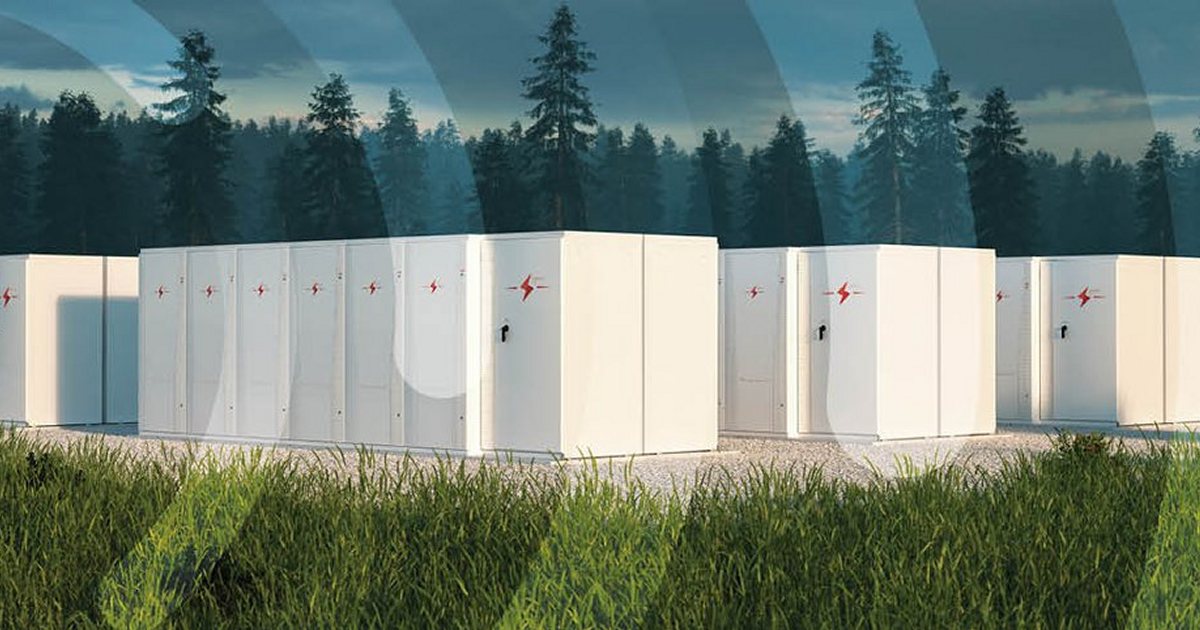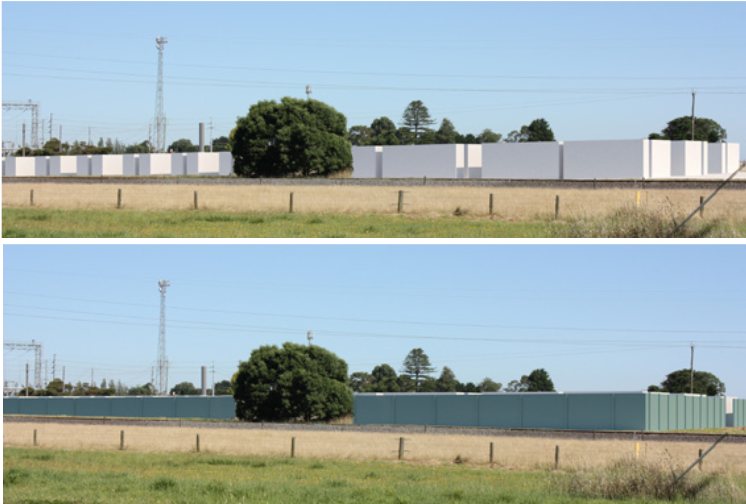Just as one renewables-related saga in Victoria’s Corangamite Shire ends, another may be beginning – this time in relation to a proposed big battery.
Tilt Renewables has proposed a 196 MW / 392 MWh battery project in Terang, which is around 212 kilometres south- west of Melbourne and situated within the Southwest Victoria Renewable Energy Zone. The Dalvui Battery Energy Storage System would be located just east of the existing Terang Terminal Station.
The Dalvui BESS is to store off- peak power for use during peak periods to help maintain reliable energy supply. The $235 million project would involve $24.3 million in investment retained locally. 150 direct and 240 indirect jobs would be created during construction, and up to 7 direct and 20 jobs during operations.
Tilt Renewables has committed to “open and honest dialogue” with all stakeholders. This is particularly important in Corangamite Shire as they’ve proven to be a pretty tough crowd – demonstrated during the Bookaar Solar Farm saga.
“We aim to build and enhance community acceptance and trust in all projects and in the renewable energy industry as a whole,” says Tilt Renewables. “We are committed to giving back to and enhancing our host communities by sharing the benefits of all our projects, including the Dalvui BESS.”
Those commitments are now being put to the test. Tilt Renewables has lodged a planning permit application for the Dalvui BESS with Victoria’s Minister for Planning, and the notice period concludes on 27 July 2022.
Corangamite Shire Council Concerns
At its meeting last night, Corangamite Shire Council reportedly resolved to adopt a draft submission to be sent to the Minister for Planning (Lizzie Blandthorn) outlining Council’s various concerns. Among them is Tilt Renewables allegedly remaining silent in their planning application regarding delivery and implementation of any community benefits program.
A significant concern is the space this project will occupy and its impact on residential housing. The draft submission states:
“The location of the Terang Terminal Station (TGTS) within the area should not automatically mean that the site is a suitable location for another BESS. Council is acutely aware of the low housing supply and vacancy rates across its townships, including Terang, and this presents an important area for future residential growth.”
Council is also a bit cranky about planning-related issues generally:
“No longer should ad-hoc large-scale development occur in absence of, or without, alignment with strategic plans, along with State, regional and local priorities,” states the submission.
Other concerns are the usual suspects including noise, traffic during construction, fire risks, landscape and visual impact. Just in terms of the latter, the following are a couple of renderings of the project without and with the acoustic barrier, as viewed from the Princes Highway.
Council asserts a project of this nature will encourage of more of the same within a concentrated area ” at the detriment of our community, amenity, natural landscape and environmental resources.”
Council Big On Gas
Something made pretty clear in the draft is the Council’s affinity for gas. It aims to prioritise and support the existing gas industry, whilst also investigating opportunities for both green and blue hydrogen generation. “Green” hydrogen is produced using renewables as the energy source, while “blue” hydrogen is derived from natural gas through steam methane reforming – and that’s a problem.
If the Minister for Planning gives the Dalvui Battery Energy Storage System a green light, it doesn’t necessarily mean the end of things as the decision can then be appealed via the Victorian Civil and Administrative Tribunal (VCAT).
Council’s draft submission and accompanying report can be viewed here (starts on page 20).



 RSS - Posts
RSS - Posts



I can see why the council isn’t particularly supportive of the Tilt proposal. They want to create a 25,600m² facility within a kilometre or two of town. And if the terminal station is what I thought was a subway station, it’ll actually be directly on the edge of town.
Tilt claim it’ll offer 150-390 jobs during construction, and up to 7 direct and 20 indirect jobs during operations, except what share of that will actually eventuate, let alone flow to Terang or Corangamite Shire? Call me a skeptic but I expect the construction jobs will go to outsiders imported to do the job, and the operational jobs will likely be more akin to a new 7/11 moving in.
The battery station won’t really offer any benefits to Terang or Corangamite, rather the township is being leveraged to ensure power for Melbourne. I was going to suggest an oil field or a coal power station would provide more benefit to the town\shire – direct jobs in large numbers (yes I’m ignoring suitability otherwise), but the Corangamite Shire is already home to gas processing plants which provide jobs and economic activity for the region, so their priority is further gas exploration. That’s in addition to their agriculture of course. What they don’t want are solar farms and renewable energy destroying their region. But with the state government failing to establish clear guidelines to define which areas are best suited for solar or wind farms, guidelines which don’t sacrifice key farmland, the council is forced to remain on the front line fighting for what’s best for their citizens.
Okay, but that’s an argument for never doing anything. Developed countries build stuff that doesn’t require many workers. The preponderance of capital is what makes them developed.
In the year twenty oh twenty-two,
Your arms they got nothing to do,
Some machine’s doin’ that for you.
Ronald, an argument for never doing anything, or an argument for user pays?
Back of the envelope figures suggest Terang only needs a 5 MWh battery, Corangamite Shire perhaps a 40 MWh battery system, to cover overnight domestic demand and have a decent margin for error. A 392 MWh battery system is thus either intended for industrial demand, to supply nearly the entire south-west coastal domestic demand of the shires\local government areas, or to provide Melbourne with power. The first option is acceptable, the second can be debated, the third is Melbourne not taking responsibility for its own needs. Since the battery’s rationale is to provide power during peak demand, not the long sunless nights, and that demand can only be explained by Melbourne, it seems clear that Melbourne is simply foisting its demands onto the country.
As for developed countries building stuff that doesn’t require many workers, really? Or are developed countries ones which have high quality of life, high incomes, advanced technological infrastructure, and rely on the service sector not their manufacturing or primary industries sector?
Australia’s services sector comprises roughly two-thirds of GDP, and employs about 80% of the labour force. When it comes to exports and imports though, the picture is vastly different. Iron ore, coal, and petroleum gas alone comprise more than 50% of Australian exports, with other primary industry products comprising most of the remaining exports. There is doubtless some minor overlap with manufacturing – I’m assuming abattoirs are manufacturing rather than a service, and of course there is some service sector support enabling the primary exports, but there is very little manufacturing or high tech exports. Yes the services sector does their own exports, but personal travel aside, they all trail miserably behind Australia’s Big 3 – iron, coal, and gas. By contrast Australia is heavily reliant on imports for manufactured and technological products. The top 10 imports are cars, refined petroleum, gold, broadcasting equipment, computers, delivery trucks, packaged medicaments, crude petroleum, vaccines blood antisera toxins and cultures, and medical instruments. Altogether these comprise less than a third of Australia’s imports. Without imports Australia’s services sector would collapse. So is Australia really a developed nation? Or a post development neo-colonial nation?
There aren’t many people employed in Australia’s capital-intensive export industries. All developed/rich nations have high productivity.
George Kaplan,
“Since the battery’s rationale is to provide power during peak demand, not the long sunless nights…”
Yep, it’s only 2 hours duration at max power output capacity, or 4 hours at half power output, or some other variation constrained by the system’s limitations. I’d suggest the Dalvui BESS is intended to soak-up cheap solar-PV during the day (or from wind) and available for discharge during the evening peak (or other short-term higher demand events).
https://www.researchgate.net/publication/339606781_Battery_energy_storage_system_BESS_design_for_peak_demand_reduction_energy_arbitrage_and_grid_ancillary_services
“…and that demand can only be explained by Melbourne, it seems clear that Melbourne is simply foisting its demands onto the country.”
The demand in the NEM is more than just from Melbourne. There are other substantial demand centres in Victoria. Geelong is one which is closer to the proposed Dalvui BESS than Melbourne.
I’d suggest the land that the proposed Dalvui BESS would sit on is substantially cheaper than a similar size site in Melbourne (or Geelong) that’s also very close to a grid terminal station.
“The first option is acceptable, the second can be debated, the third is Melbourne not taking responsibility for its own needs.”
So, are you advocating for more jobs for Melbourne, and little if any for rural and regional areas, George?
Michael Bloch,
“At its meeting last night, Corangamite Shire Council reportedly resolved to adopt a draft submission to be sent to the Minister for Planning (Lizzie Blandthorn) outlining Council’s various concerns. Among them is Tilt Renewables allegedly remaining silent in their planning application regarding delivery and implementation of any community benefits program.”
Is Corangamite Shire Council saying something like “show me the money”? ?
“Something made pretty clear in the draft is the Council’s affinity for gas. It aims to prioritise and support the existing gas industry, whilst also investigating opportunities for both green and blue hydrogen generation.”
I’d suggest the last thing the State of Victoria needs is maintaining demand for more gas. Victoria’s fossil gas production has already peaked.
See Figure 1 in the AEMO’s Victorian Gas Planning Report published Mar 2021.
https://aemo.com.au/-/media/files/gas/national_planning_and_forecasting/vgpr/2021/2021-victorian-gas-planning-report.pdf?la=en
Per the AER’s report titled State of the Energy Market 2021, Chapter 4: Gas markets in eastern Australia includes Table 4.1: Gas basins serving eastern Australia, showing 2P gas reserves remaining (at Feb 2021) for:
* Gippsland (Vic) was at 1,924 PJ (5% share of eastern Australia reserves)
* Otway (Vic) was at 745 PJ (2% share)
* Bass (Vic) was at 166 PJ (less than 1% share)
* Thus the Victorian 2P gas total reserves was at 2,835 PJ
Victorian gas production from Gippsland (255 PJ), Otway (37 PJ) & Bass (11 PJ) basins in 2022 totaled 303 PJ.
https://www.aer.gov.au/system/files/State%20of%20the%20energy%20market%202021%20-%20Chapter%204%20-%20Gas%20markets%20in%20eastern%20Australia.pdf
If a 303 PJ gas production rate is maintained then all of Victoria’s 2P gas reserves will be gone in less than a decade.
Evidence/data indicates it’s time for Victoria to transition away from fossil gas dependency, fast.
IMO, if there are enough NIMBYs then nothing gets done… and there are worsening consequences.
https://www.solarquotes.com.au/blog/bookar-solar-saga-mb2563/#comment-1482565